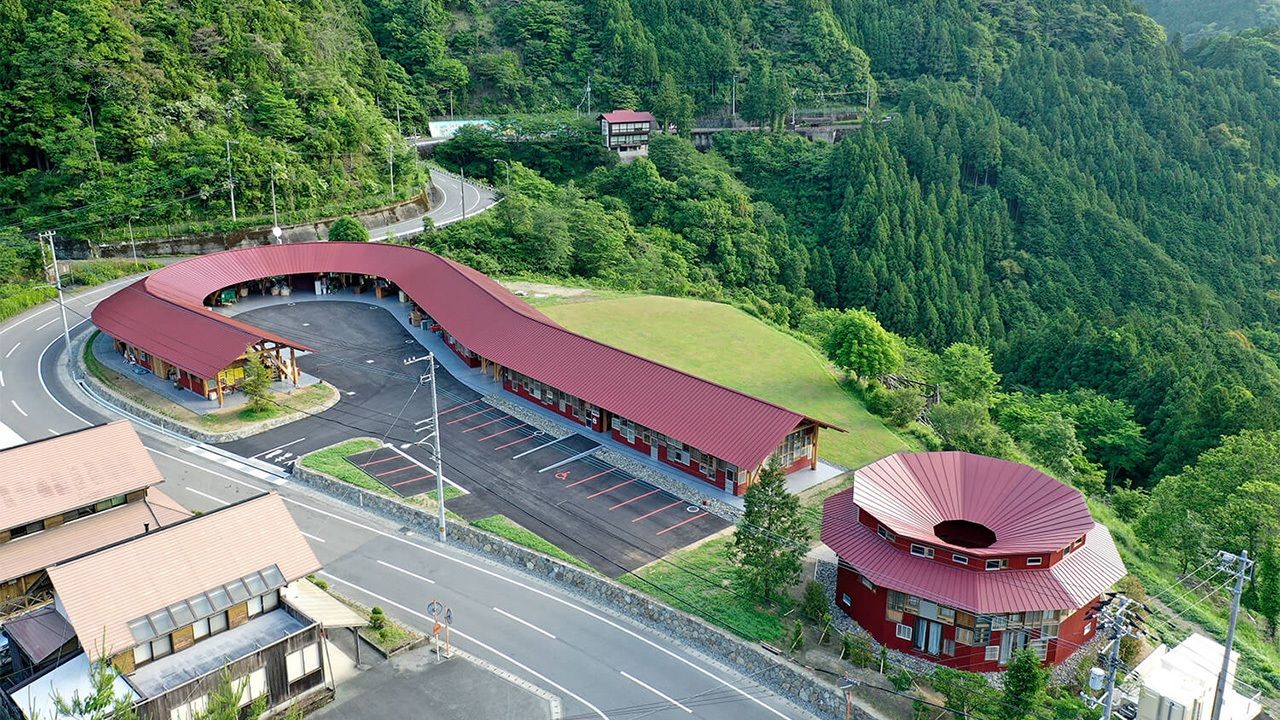
Kamikatsu: Leading the World in Waste Reduction
Guideto Japan
Lifestyle Environment- English
- 日本語
- 简体字
- 繁體字
- Français
- Español
- العربية
- Русский
A Hotel in a Dump?
Kamikatsu, a settlement of 742 households nestled in the mountains about an hour’s drive from central Tokushima, was the first municipality in Japan to declare itself “zero waste” in 2003. Putting into practice the 3Rs—“reduce, reuse, and recycle”—enabled the municipality to achieve a recycling rate of 80% in 2021, far higher than the national average of 20%. Kamikatsu’s unique approach to the sorting of waste into what are now 45 different categories has received particular attention. Selected as an “SDGs Future City” by the Cabinet Office, Kamikatsu enjoys a constant stream of local and overseas visitors, and the municipal government continues to roll out new projects aimed at further waste reduction.
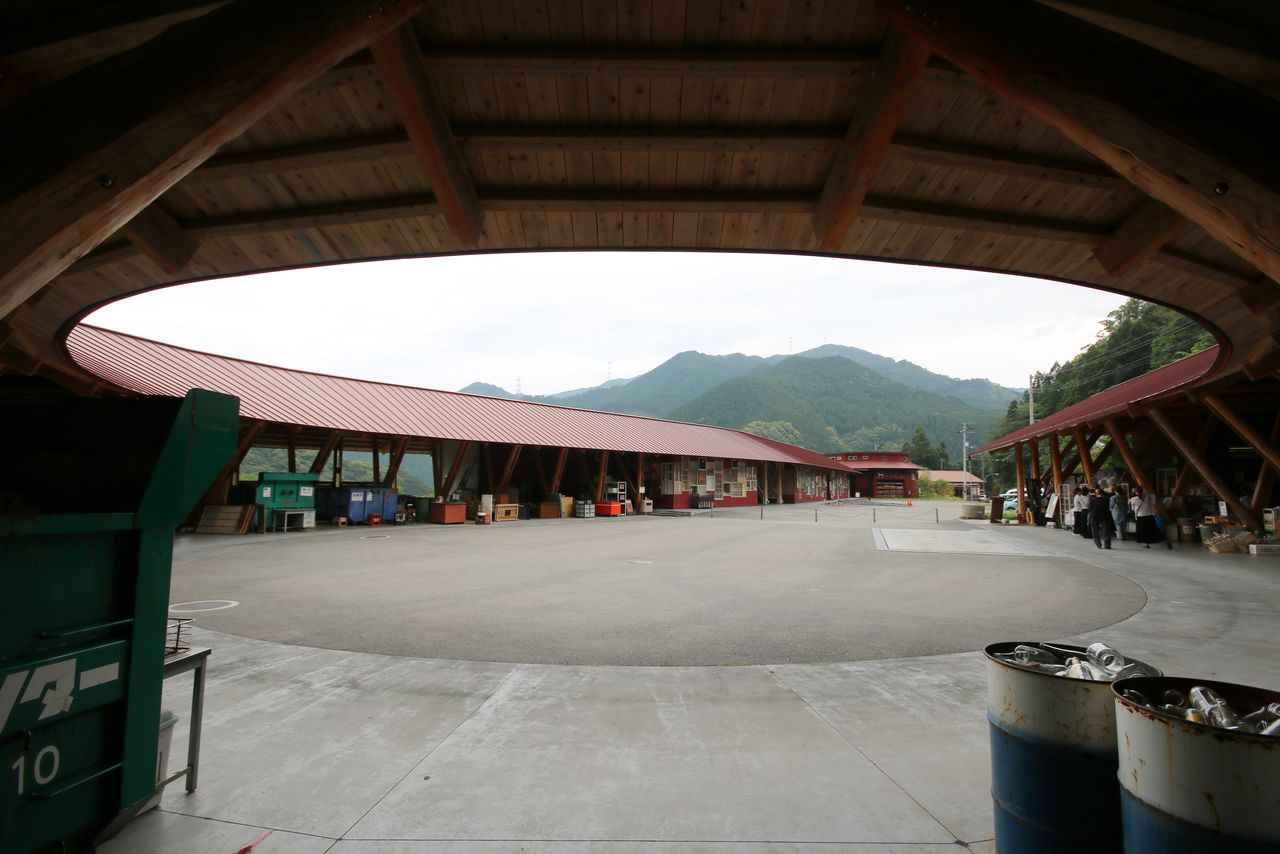
When viewed from above, the Kamikatsu Zero Waste Center resembles a question mark. The curved portion is a refuse center. (© Fujiwara Tomoyuki)
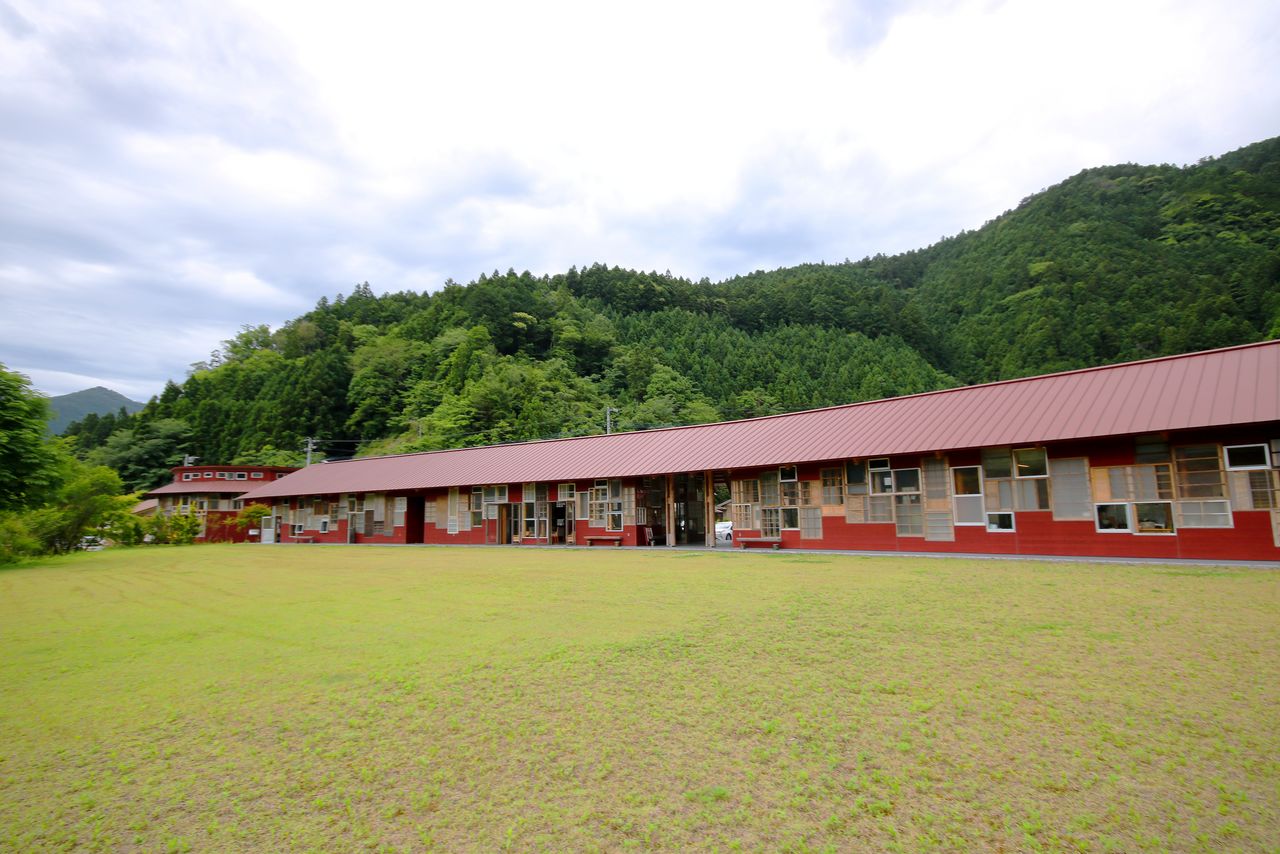
Embedded in the center’s walls are 540 repurposed windows, door frames, and wall panes that have been joined together like patchwork. (© Fujiwara Tomoyuki)
The hub for these initiatives, the Kamikatsu Zero Waste Center, was opened on May 30, 2020, “zero waste day” in Japan. In addition to the main refuse collection area where residents take their household rubbish, the center also contains a community space, an office, a research center, and even accommodation. There is also the Kurukuru Kōbō, a boutique where items left by other residents are free for the taking. Kurukuru enables the reuse of some 550 kilograms of discarded items every month.
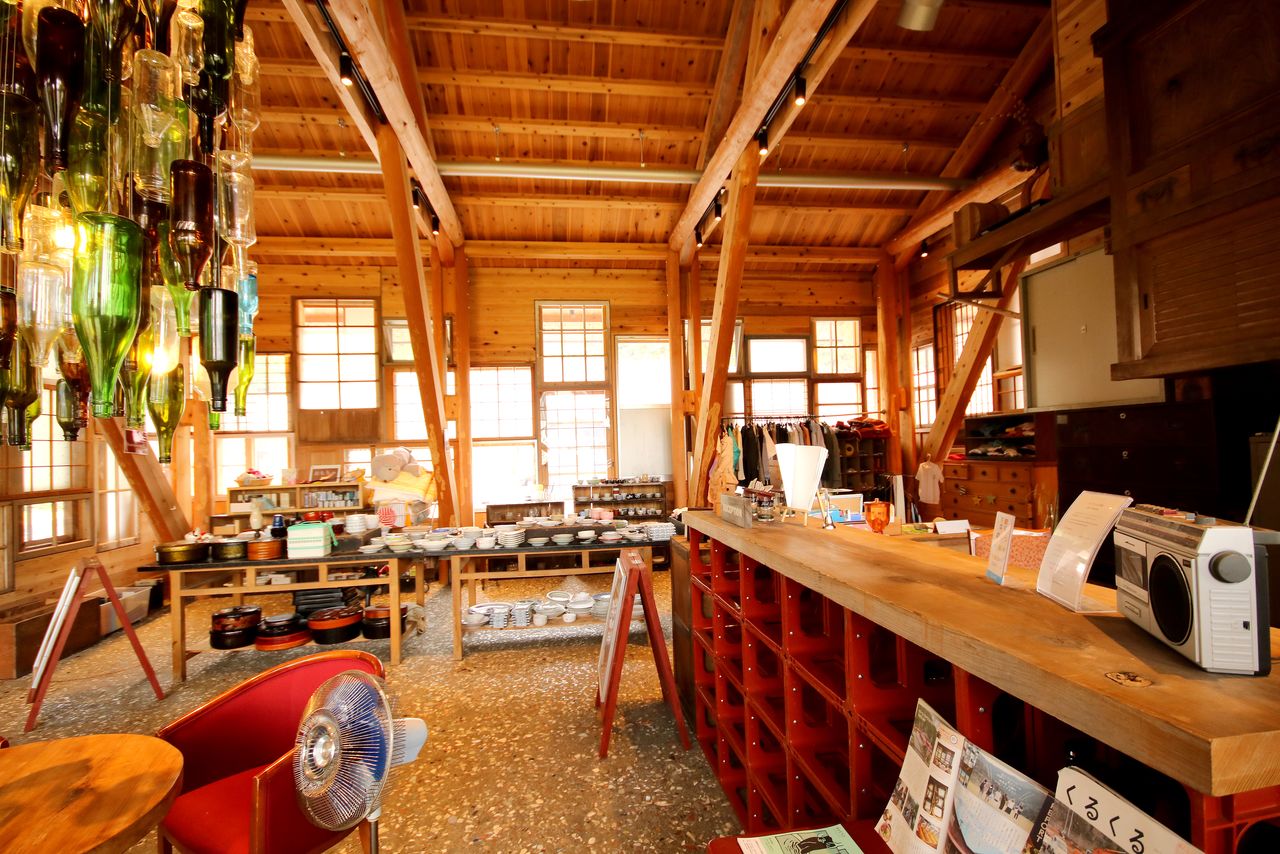
Kurukuru has the feel of an antique shop. (© Fujiwara Tomoyuki)
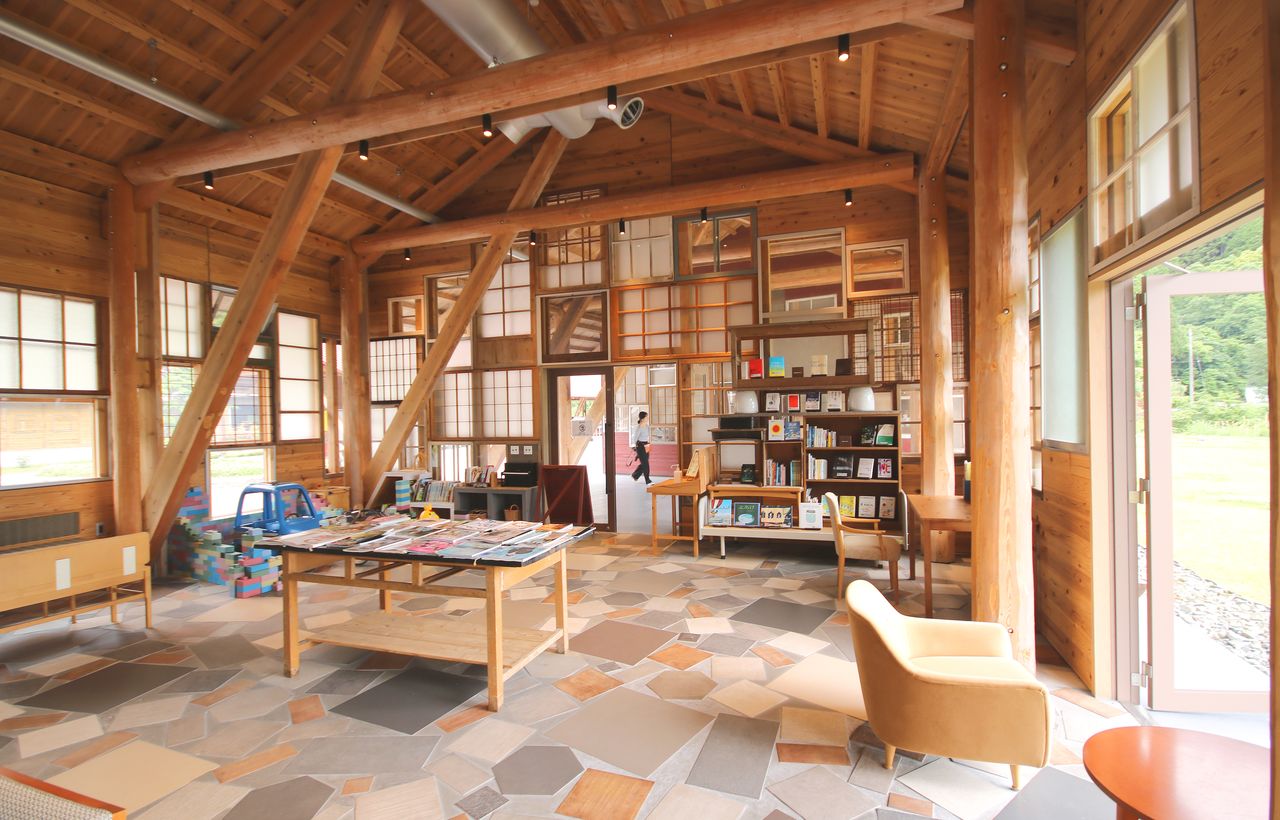
The facility’s community space is available for training, meetings, and other events. (© Fujiwara Tomoyuki)
The selling point of the accommodation area, which is dubbed Hotel Why, is the ability to experience a zero-waste lifestyle. Why owes its popularity to the modern, clean, feel it has achieved despite being built from and furnished with discarded materials. There are no TVs in the rooms, and the township has neither a supermarket nor a convenience store. What it does have is abundant natural beauty. The concept of “getting away from it all” while thinking about the environment has proved very popular, and despite opening in the midst of the COVID-19 pandemic, the hotel welcomed more guests in its first three years than there are residents in Kamikatsu.
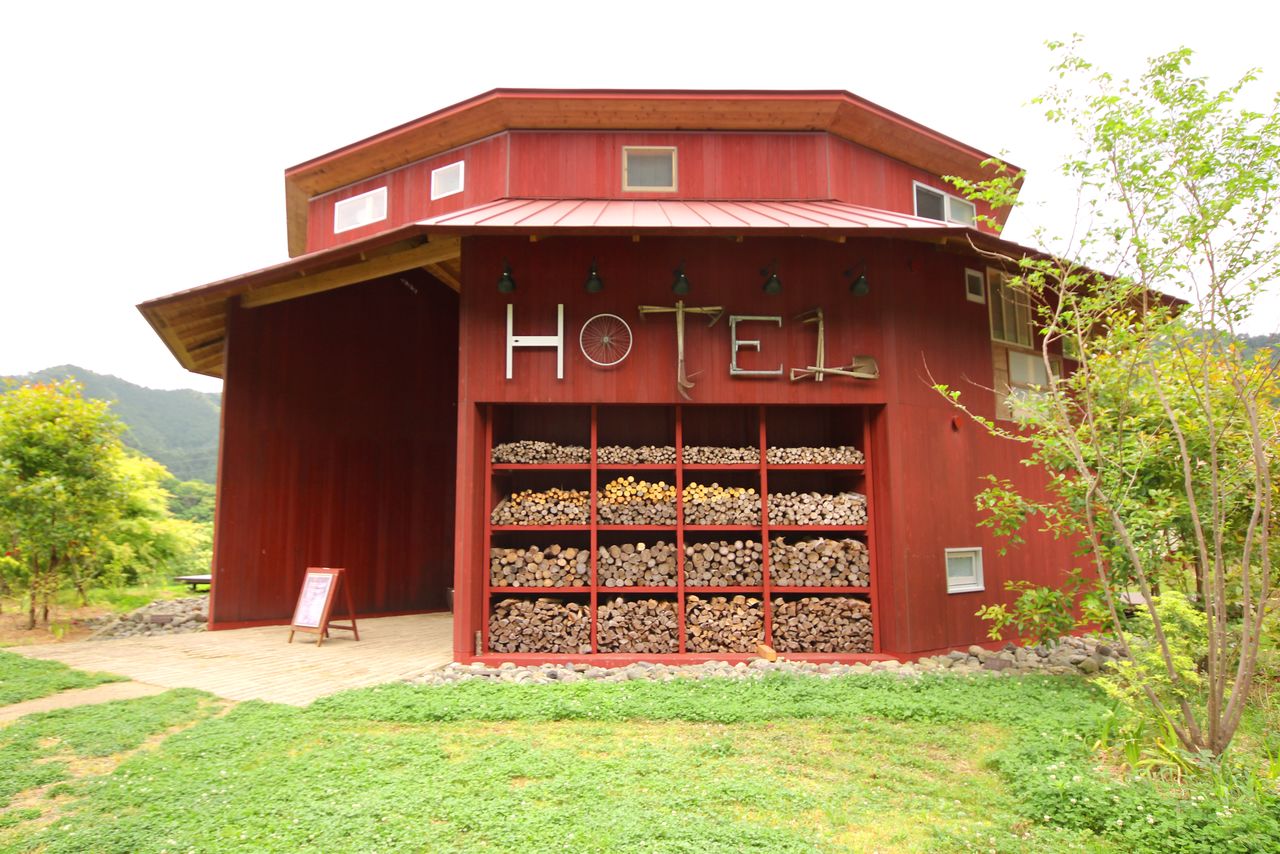
The accommodation building forms the dot at the bottom of the question mark seen from above in the article’s banner photo. (© Fujiwara Tomoyuki)
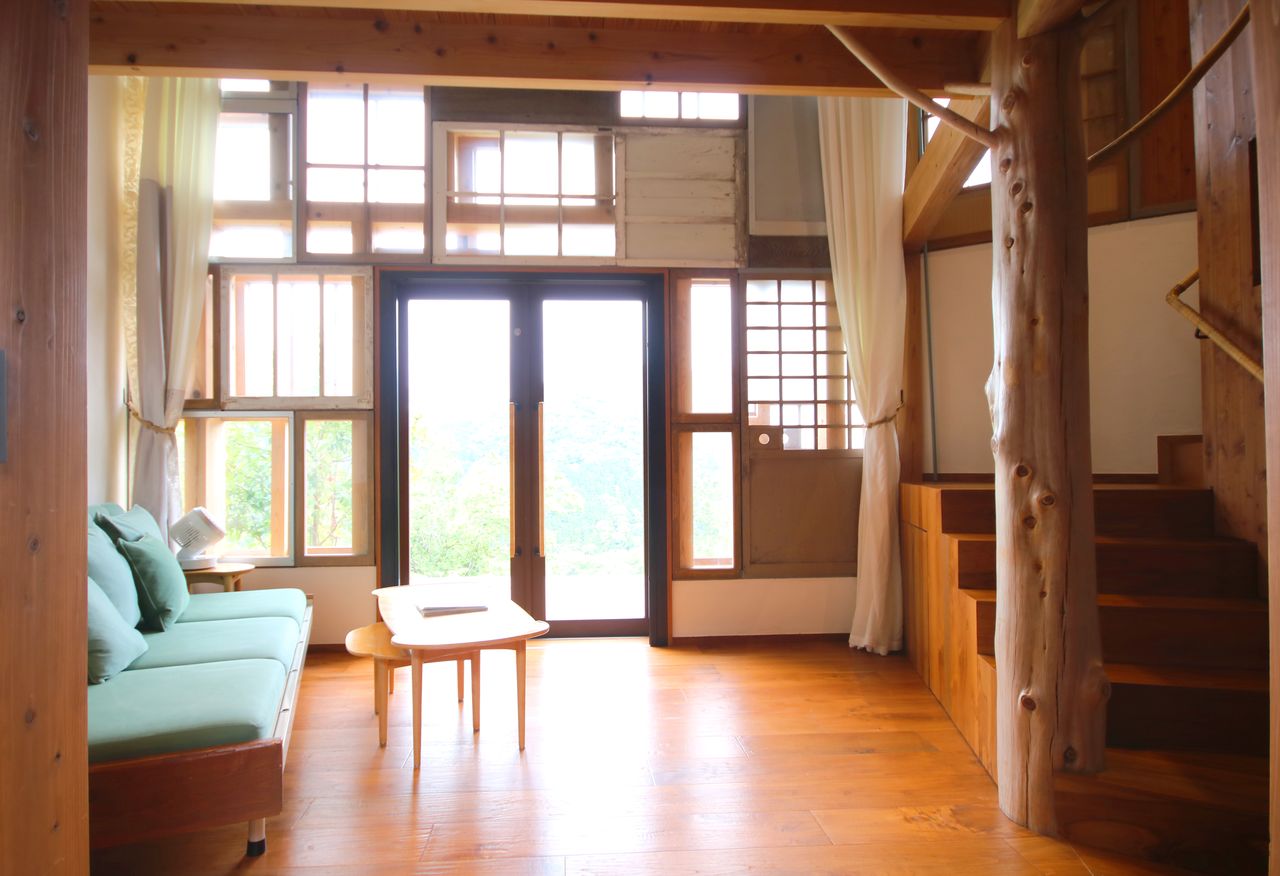
Each of the high-ceilinged, two-story rooms accommodates up to four people. (© Fujiwara Tomoyuki)
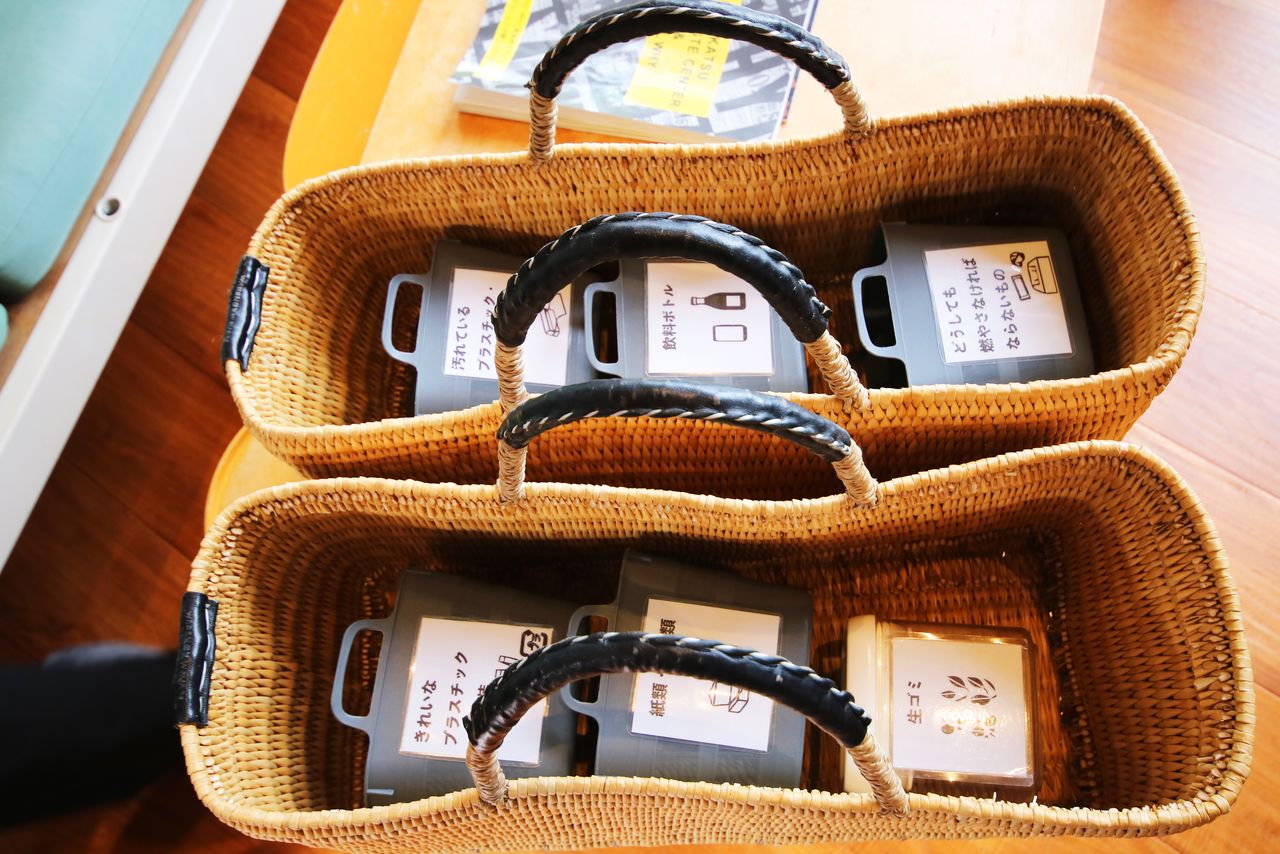
Guests are required to sort and take out their own rubbish. (© Fujiwara Tomoyuki)
Elimination of Organic Waste a Game Changer
While the center is a symbol of Kamikatsu and has become a tourist attraction, director Ōtsuka Momona explains that the site burned waste in the open until the 1990s.
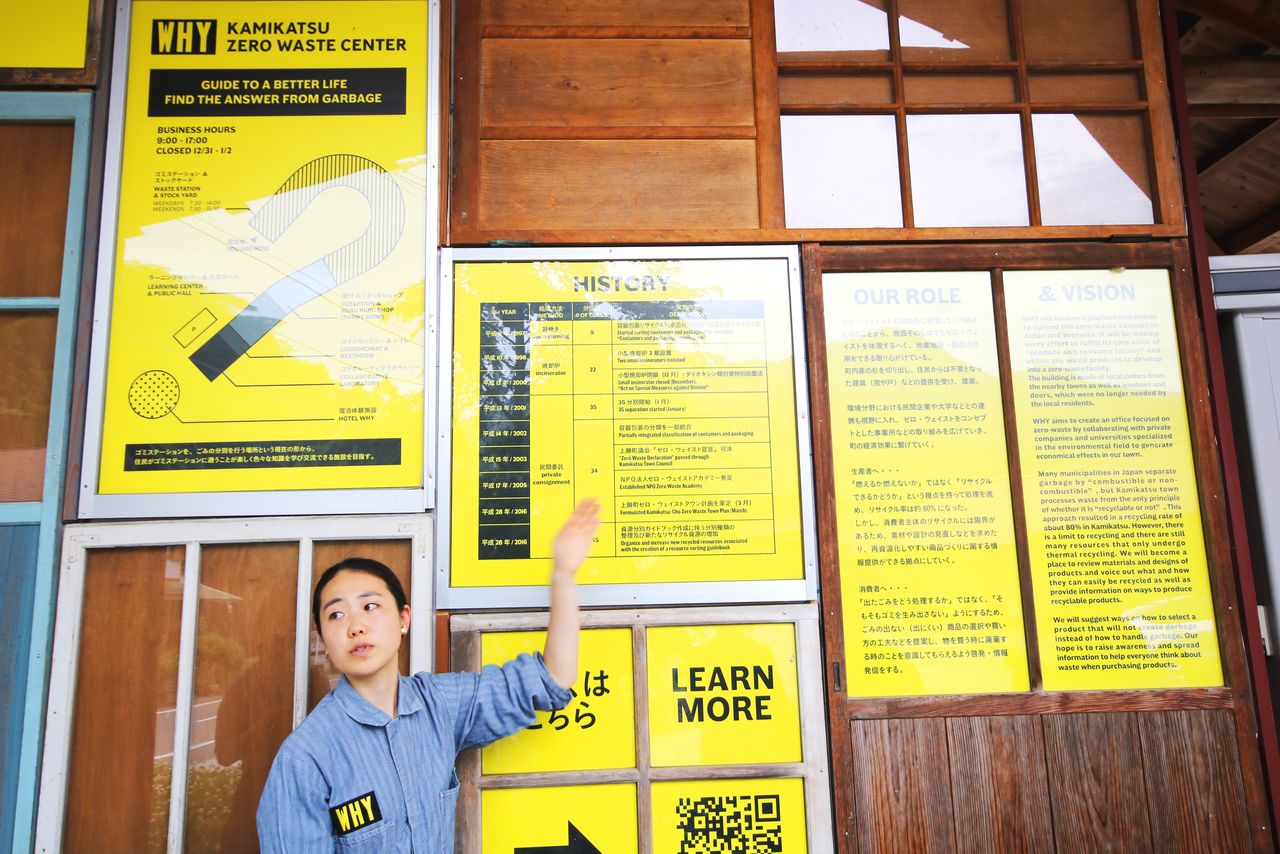
Zero Waste Center Chief Environmental Officer Ōtsuka Momona. (© Fujiwara Tomoyuki)
Stricter environmental regulations eventually forced Kamikatsu to stop this practice, and the local government opened the Hibigaya refuse center in 1997, which sorted refuse brought in by residents. Waste was initially separated into 9 categories, but as of last year that number had more than doubled to 22. In fact, after the center’s incinerator was shut down in 2001, there were 35 different categories.
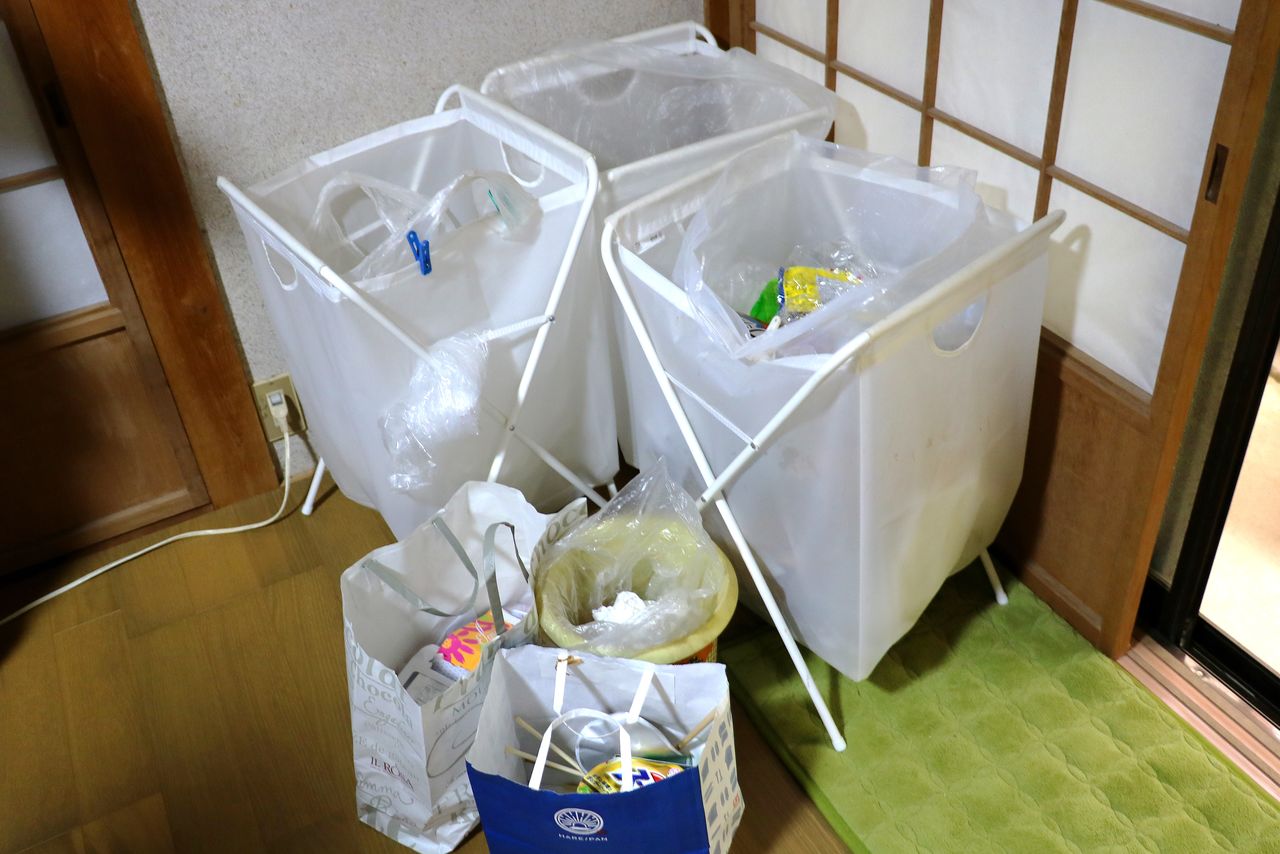
Rubbish bins at the home of a local resident. Rubbish is sorted into a few major categories before being taken to the center. (© Fujiwara Tomoyuki)
Obviously, more categories means more effort for residents. A representative of the local government toured all of Kamikatsu’s neighborhoods telling residents about the scheme’s benefits. Organic waste, which represents 40% of household refuse, was a particular problem. Because of the tendency of organic matter to decay and produce odors, it was preventing residents from reducing the frequency of their visits to the center and the volume of waste they brought in. The local government decided to encourage households to install composting machines that use microorganisms to turn organic waste into fertilizer. Thanks to a subsidy that enabled households to buy a ¥50,000 electric composter at an 80% discount, four of every five households ended up installing one at home.
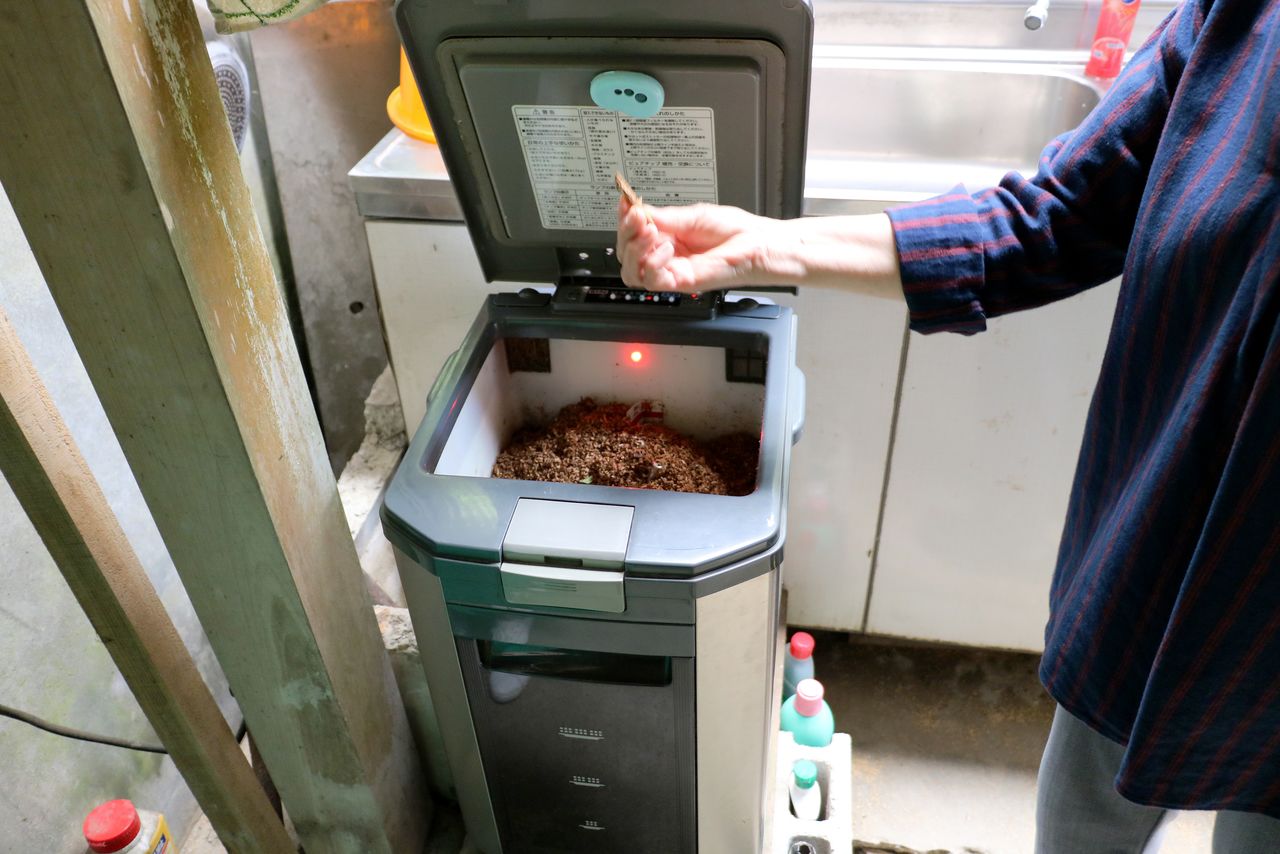
Electric composters produce odorless compost. (© Fujiwara Tomoyuki)
Kamikatsu’s mountainous location and sparse population made rubbish collection difficult, and the composters were a major breakthrough. The many farmers in the region value the fertilizer produced, and the wood chips used in the composting process are sourced from abundant local cedar. It was only possible to build an accommodation facility next to the refuse station because the environment was a clean one, with no organic waste or incinerators on site. It truly was a case of killing two birds with one stone.
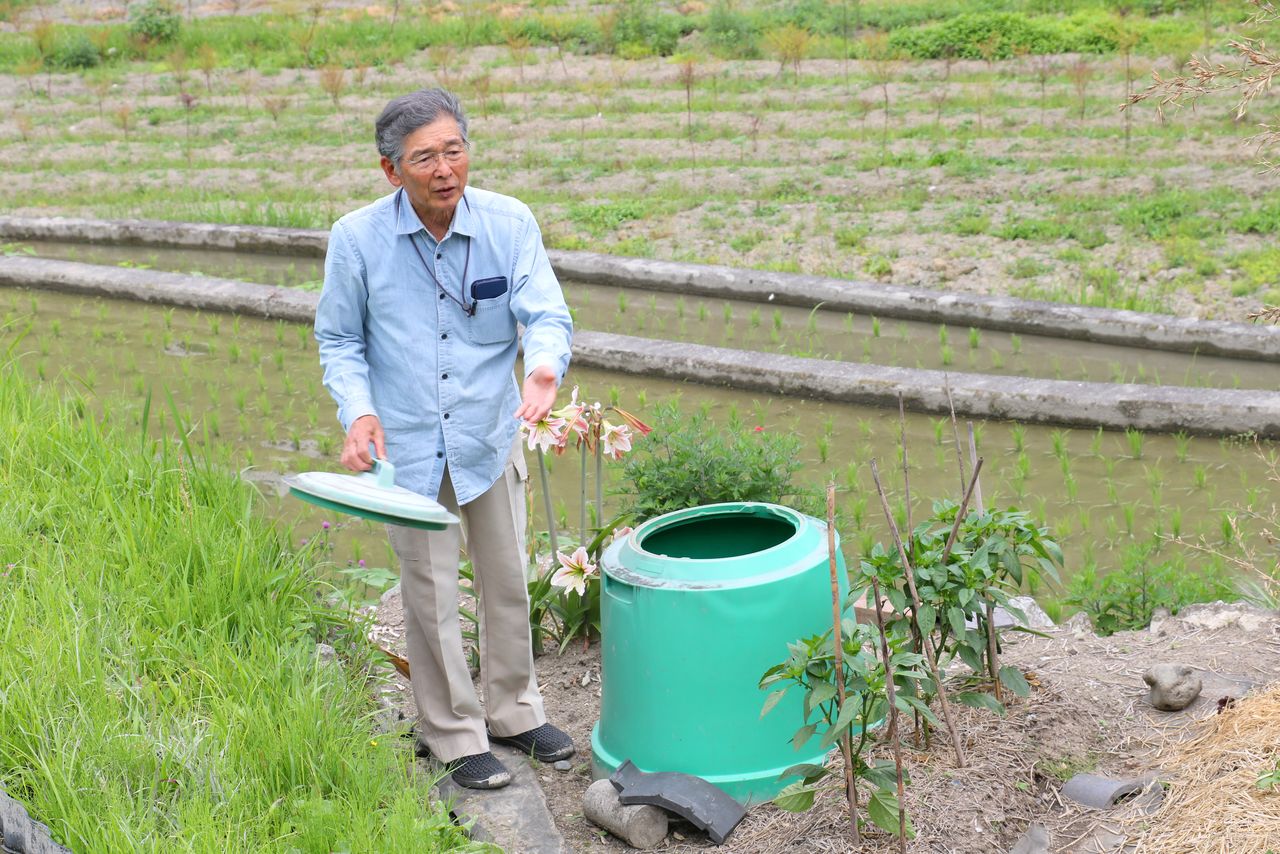
Organic waste is converted into fertilizer that can be applied to rice paddies, fields, and gardens. (© Fujiwara Tomoyuki)
Understanding the Cost of Waste
Embracing a philosophy of “sorted, it’s valuable—unsorted, it’s just waste,” the town government currently recommends separating refuse into 45 different categories. While sanitary waste, rubber articles, and other items that have to be incinerated are entrusted to a contractor, most other waste is either reused or recycled.
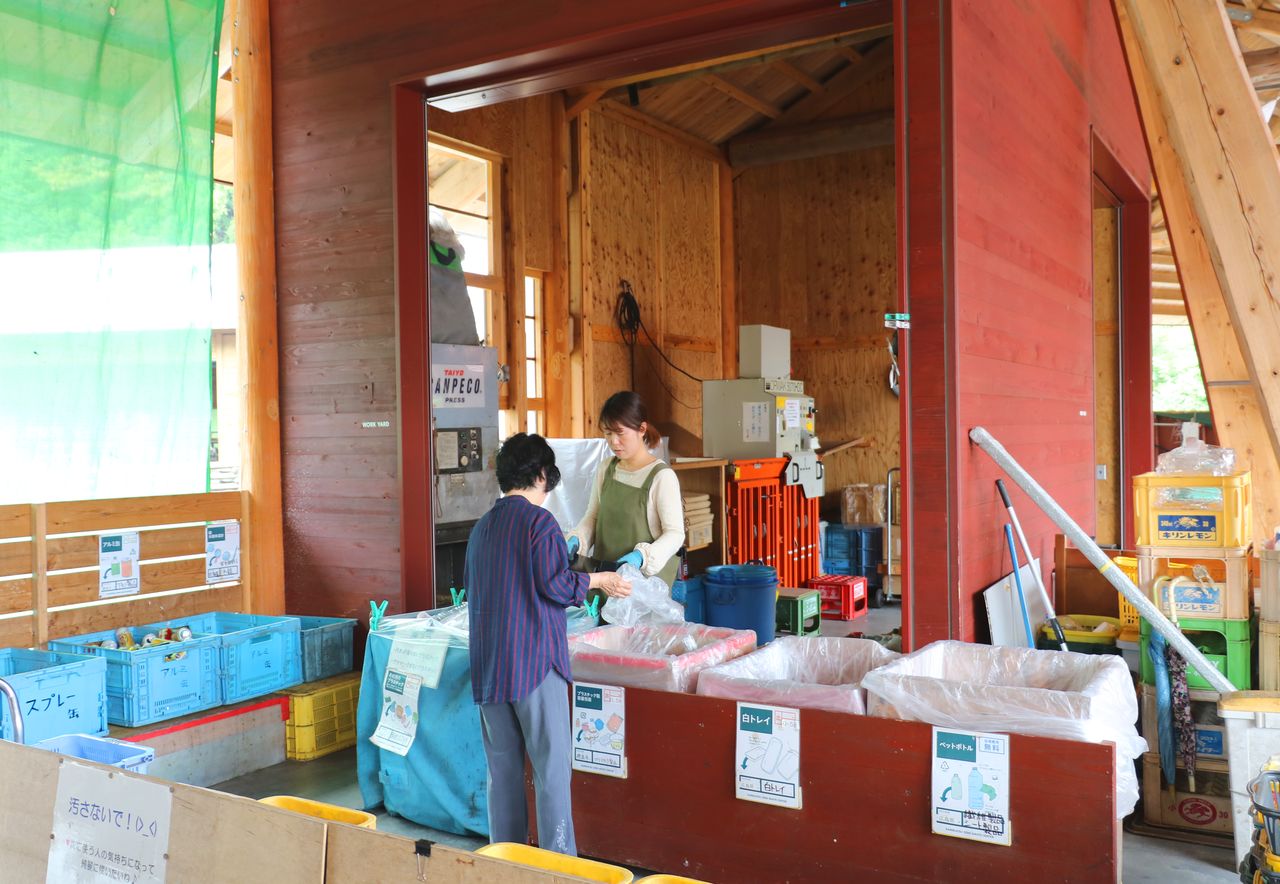
The center’s staff answer can answer questions about sorting waste. (© Fujiwara Tomoyuki)
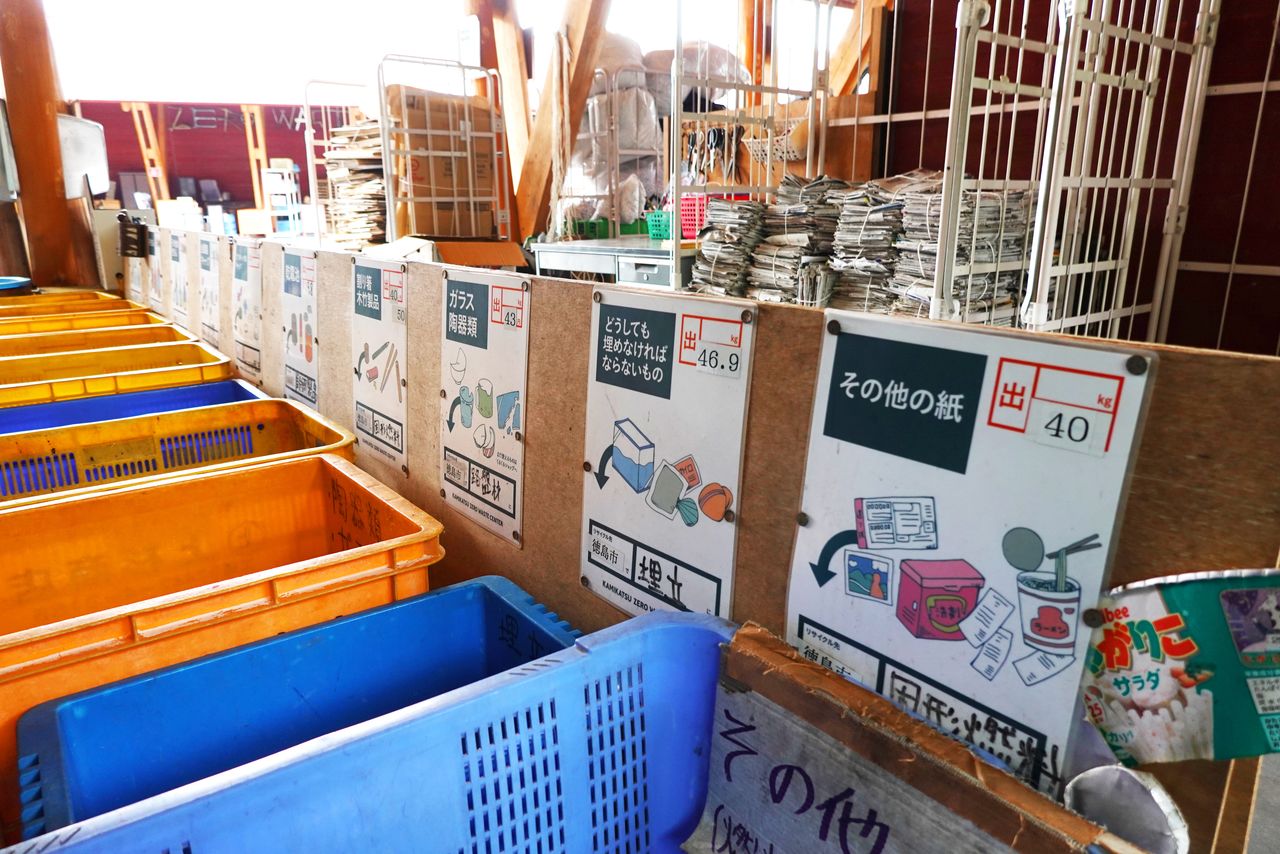
The disposal cost or resale value is shown for each item. (© Fujiwara Tomoyuki)
The town’s Chiritsumo points scheme has also helped boost residents’ interest in separation. Points received for recycling magazines and other eligible refuse varieties can be collected and exchanged for vouchers, thereby redistributing to residents revenue gained from the sale of recyclables.
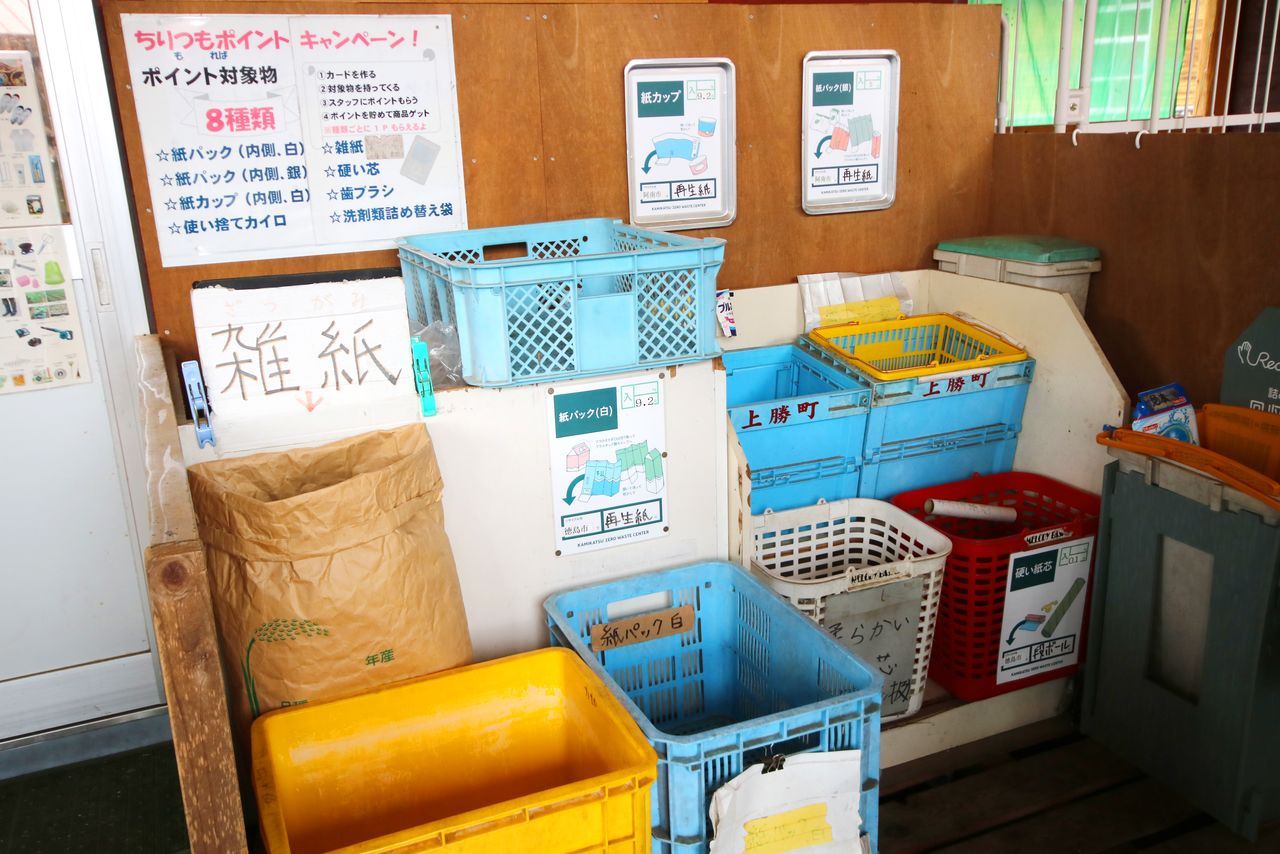
Toothbrushes and refillable containers for liquid detergent are collected by manufacturers Lion and Kaō. (© Fujiwara Tomoyuki)
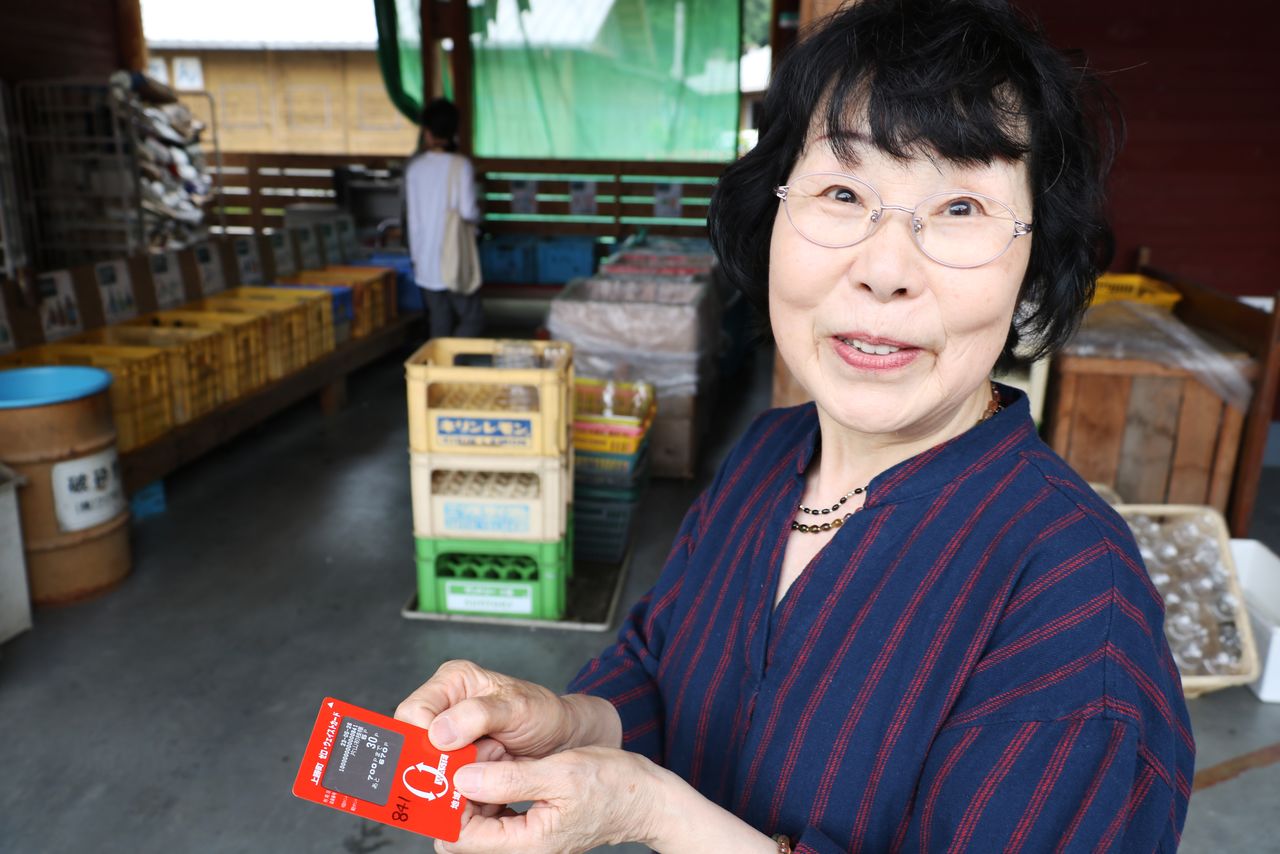
The points scheme is a motivation for visiting the site. (© Fujiwara Tomoyuki)
Local restaurants also actively promote waste reduction, and are working to phase out odd-sized food packaging that cannot be traded on markets for recyclables, as well as disposable hot towels. They also pour tea into flasks provided by diners in the interests of waste reduction. Currently, a total of five local restaurants are accredited under the zero-waste scheme pioneered by Kamikatsu.
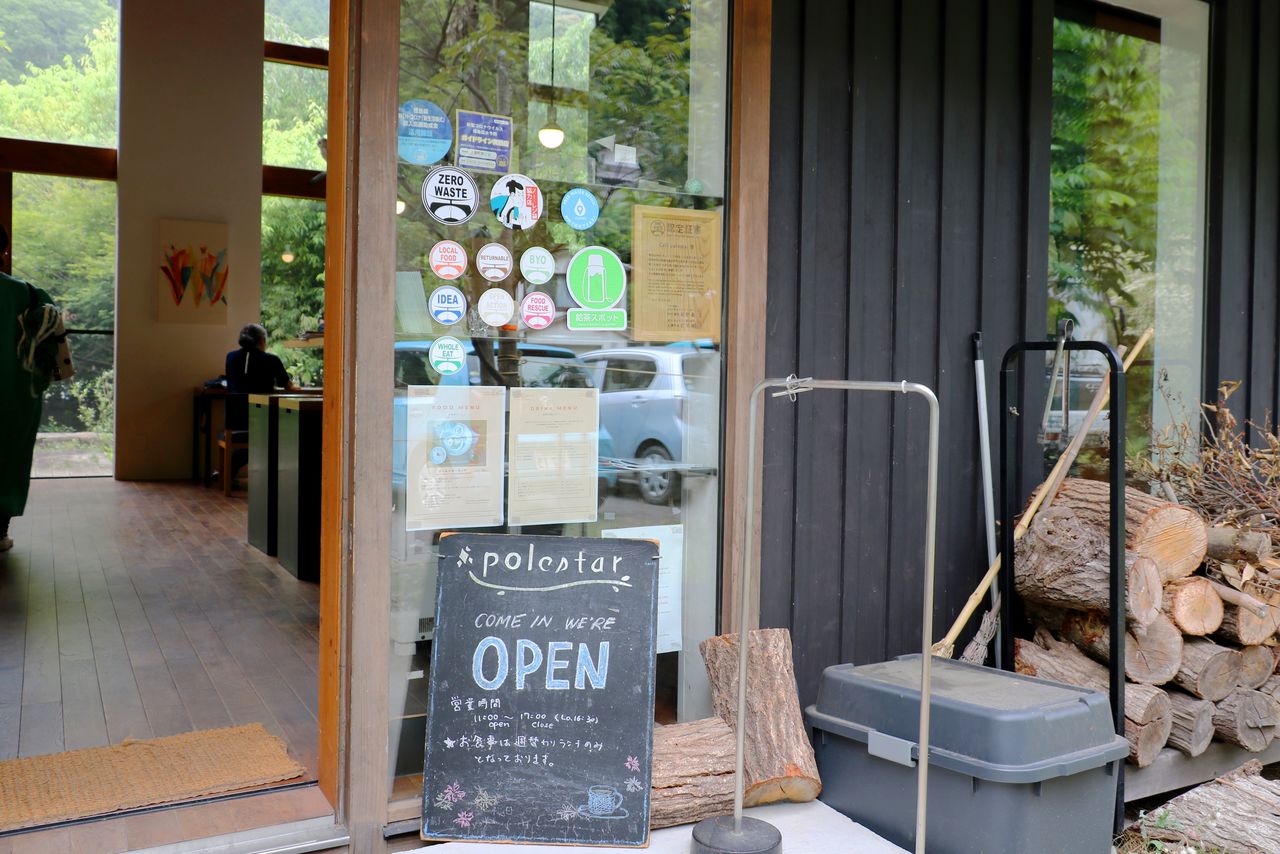
Local eatery Café Polestar displays stickers demonstrating its accreditation under the zero-waste scheme. (© Fujiwara Tomoyuki)
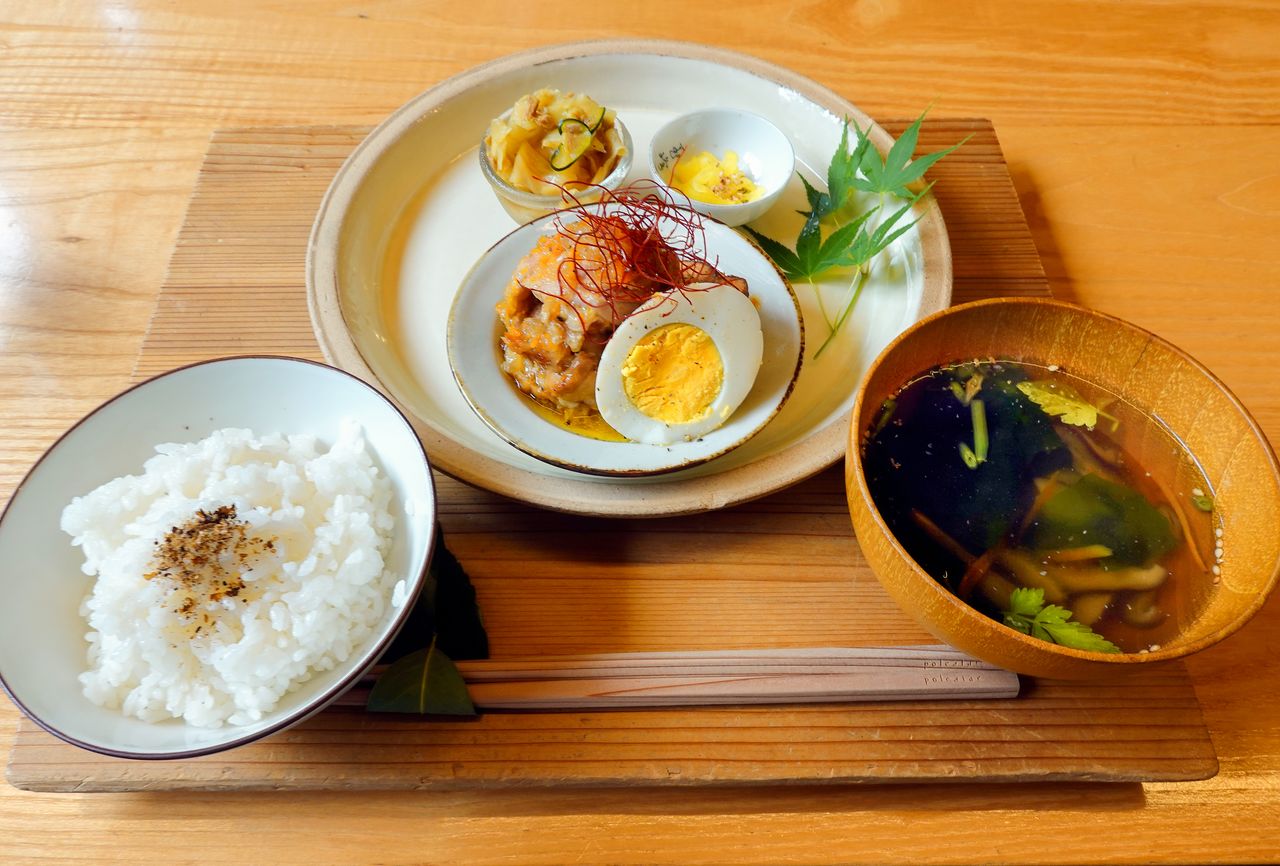
The rice pictured here is grown locally, and a locally sourced leaf serves as a chopstick rest. (© Fujiwara Tomoyuki)
New Challenges for the Future
Despite a townwide initiative that saw all residents working together to realize the target, Kamikatsu did not achieve its initial goal of zero waste by 2020, with only 80% of waste being recycled. The town government now realizes that efforts by consumers alone will not be enough to get rid of the remaining 20%, and has declared a zero-waste plan for the next 10 years that sets out new objectives, one of which is the reduction of the workload on residents. Central to the plan is the creation of a circular economy characterized by partnerships with businesses and research organizations. In Kamikatsu, local residents feel responsible for properly disposing of the resources they consume, and many businesses want to collaborate with those residents as part of being accountable for manufacturing the products. One of these is the beverage giant Suntory.
While Japan recycles 86% of plastic drink bottles, a percentage that is high by world standards, only around 20% are actually converted into new bottles. Suntory already recycles nearly 50% of the bottles it produces into new drink containers, and aims to make all plastic bottles manufactured globally 100% sustainable (made solely from materials that are either recyclable or derived from vegetable sources) by 2030. Suntory has a partnership with the Kamikatsu government, and from April 2024 will buy back plastic bottles collected by the town government to use to make new bottles.
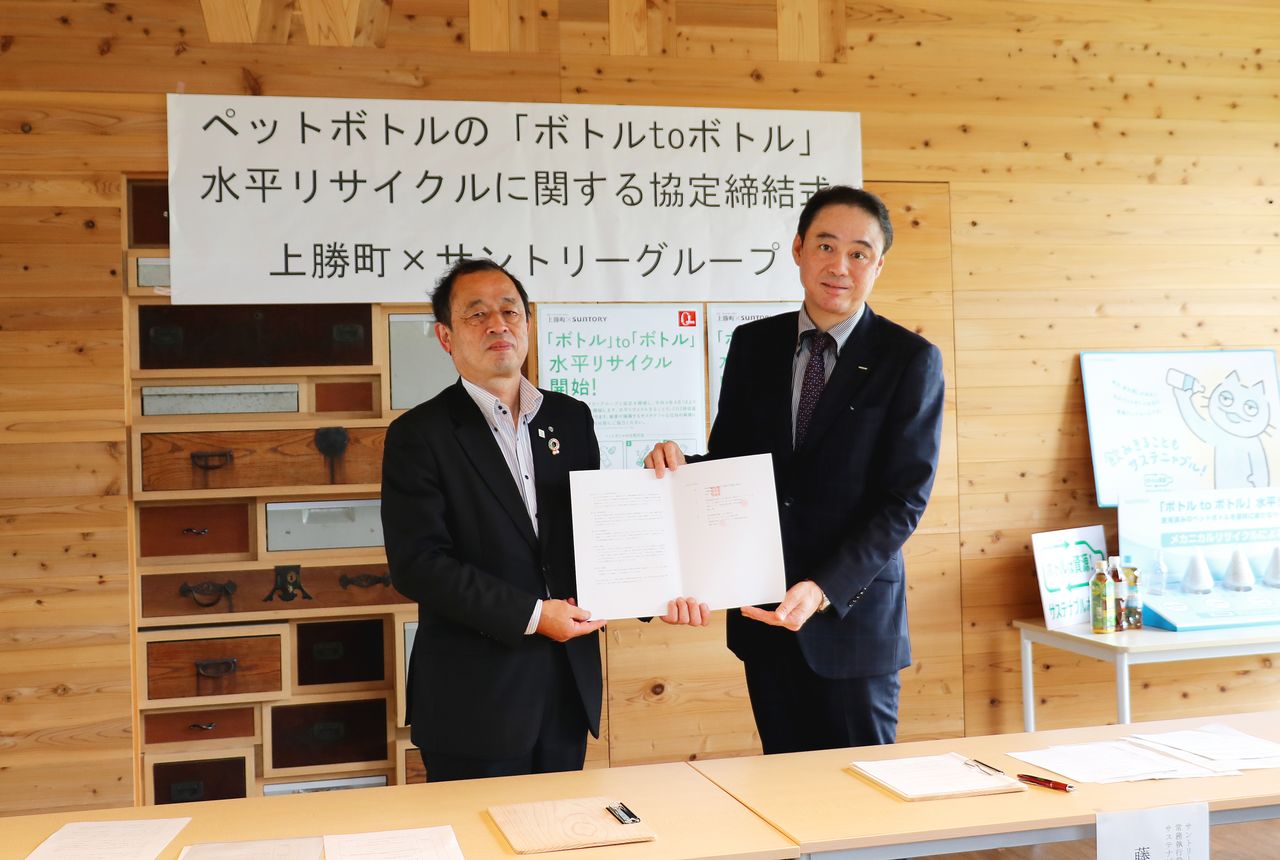
The Kamikatsu government and Suntory signed a partnership on May 29, 2023. (© Fujiwara Tomoyuki)
Another pillar of the scheme is investment in people to work in the zero-waste sector. With the town’s population falling below 1,500, depopulation is a looming issue. Ōtsuka Momona, chief environmental officer at the Zero Waste Center, says she wants to encourage interaction both among residents and with those from outside the township to gather ideas and skills for eliminating waste. Ōtsuka herself is originally from Kanagawa. While studying fashion overseas, she became interested in sustainability. After finishing university in 2020, she accepted her present role.
Of the 20 or so staff who work at the Zero Waste Center and hotel, about half are local. The predominantly young group of out-of-towners interacts extensively with locals, participating in festivals and helping to pick tea and harvest other crops. The elderly residents who make up the lion’s share of the town’s population also have various skills. Next to the center is Kurukuru Kōbō, a boutique for reconditioned articles that is run by a center for preventive care. Here, elderly residents can put their craft skills to good use. The area also has a burgeoning leaf industry worth over ¥200 million a year. The majority of agricultural workers are 70 or over, and work growing or harvesting the greenery that decorates local cuisine.
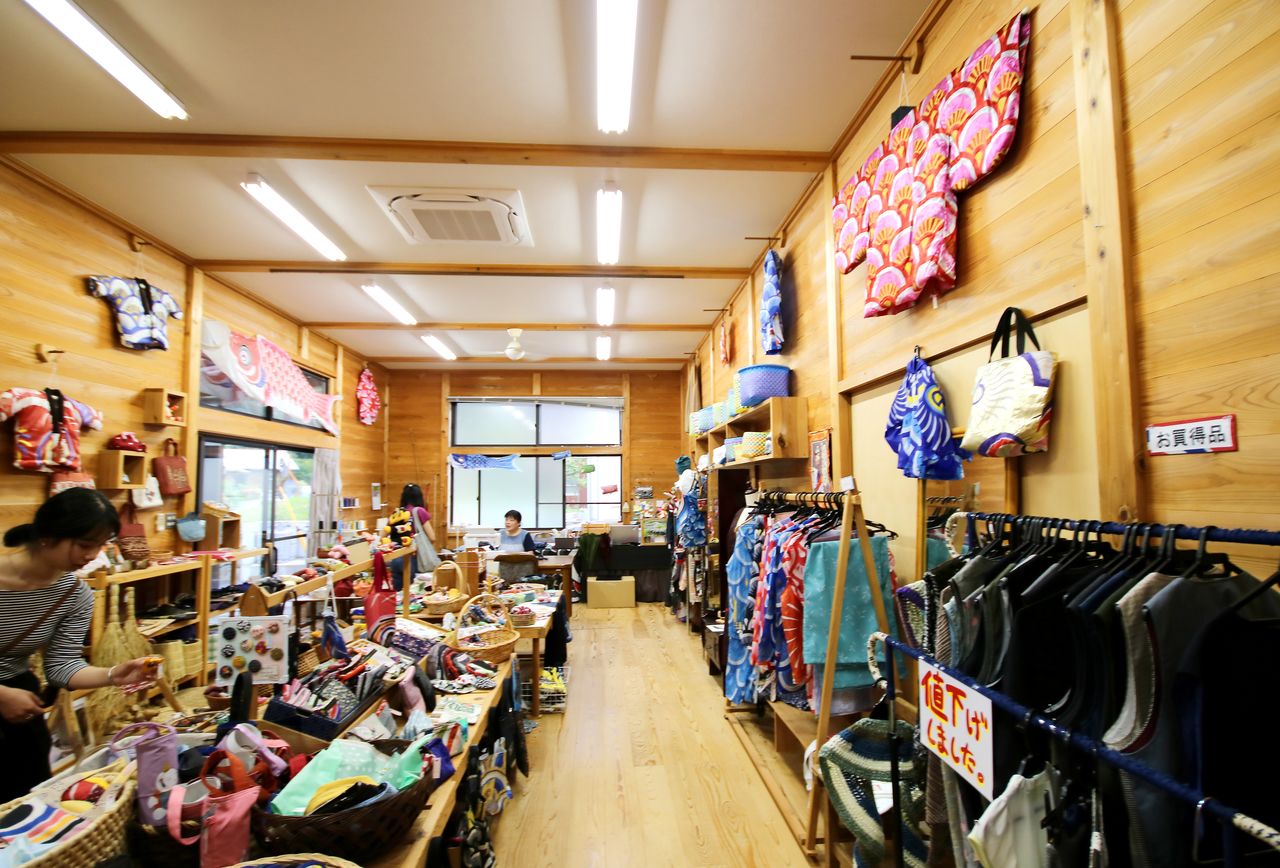
Kurukuru sells clothes and accessories made from kimono fabric and other upcycled materials. (© Fujiwara Tomoyuki)
Twenty years of the zero-waste movement have produced side benefits in the form of tourism, migration, and business. What started out as an ambitious goal has turned into a means of creating a sustainable township. Kamikatsu’s energetic elderly residents and the younger generation, including those who have moved to the area, continue to work together to create a scenic area with zero rubbish.
Kamikatsu Zero Waste Center
- Address: 7-2 Fukuhara-shimohiura, Kamikatsu, Tokushima Prefecture
- Open: daily
- Hours of business: 9:00 am to 5:00 pm (refuse collection from 2:00 pm Monday to Friday and 3:30 pm Saturday and Sunday)
- Getting there: The Zero Waste Center is one hour by car or one and a half hours by bus from JR Tokushima Station (change buses at Yokosenishi and get off at Hibigaya)
(Originally published in Japanese. Reporting and text by Fujiwara Tomoyuki of Nippon.com. Banner photo: Designed by Nakamura Hiroshi, the Zero Waste Center has won many awards, including the 2021 Japan Institute of Architects Environmental Architecture Award. © Transit General Office Inc.)